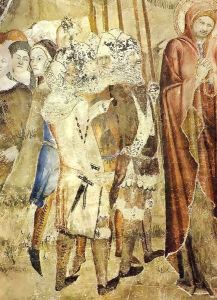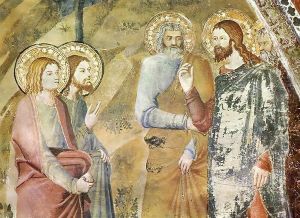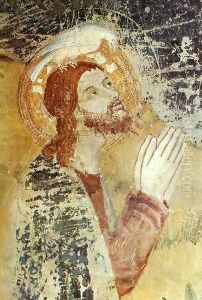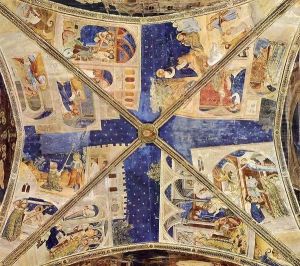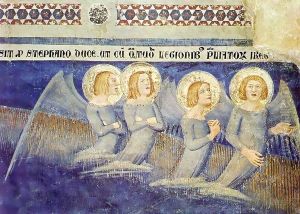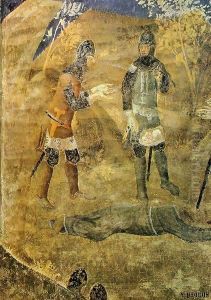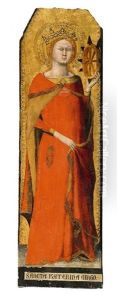Matteo Giovannetti Paintings
Matteo Giovannetti was a 14th-century Italian painter, known primarily for his work in the Papal Palace in Avignon. He was born around 1322 in Viterbo, a city in the central region of Italy. Not much is known about his early life or training, but he is thought to have studied painting at an early age, likely in Italy, which was a major center for artistic development during the Middle Ages.
Giovannetti is most renowned for his work under Pope Clement VI in the Papal Palace at Avignon, where he was summoned in 1343. There, he was tasked with the decoration of the Pope's private apartments, including the now-famous frescoes in the Chapelle Saint-Martial and the Chapelle Saint-Jean. His work in Avignon reflects the influence of the Italian Renaissance, which was just beginning to blossom, combined with the Gothic style that was prevalent in France at the time.
His frescoes in the Chapelle Saint-Martial depict the life of Saint Martial, and they are celebrated for their vivid coloration and detailed narrative. In the Chapelle Saint-Jean, he painted scenes from the life of St. John the Evangelist. These works are characterized by their intricate compositions and the graceful figures that show a deep understanding of human anatomy and movement, which was a significant development in the evolution of Western art.
Giovannetti also worked in various other chapels and rooms within the Papal residence, contributing to the rich artistic legacy of the Avignon Papacy. His style had a significant impact on the development of painting in the Provence region of France and he is considered an important precursor to the later fresco painters of the Italian Renaissance.
Little is known about his life after his work in Avignon. Matteo Giovannetti's exact date of death is not recorded, but it is presumed that he died around 1368. Despite the lack of extensive personal details, his contribution to the art of the Avignon Papacy has cemented his reputation as an artist of great skill and creativity. His works remain an important part of the artistic heritage of both Italy and France.

